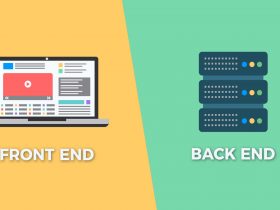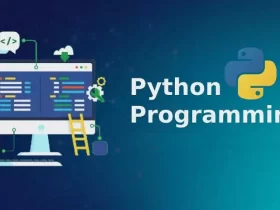If you’re new to programming, you may be wondering: What is Ruby programming language? It’s an object-oriented programming language, supports free format, and is dynamically typed. Learn about its advantages and why it’s the programming language of choice for professionals. We’ll also cover the different ways you can use Ruby in your project.
Ruby is an object-oriented programming language
Ruby is an object-oriented programming language that supports inheritance, dynamic dispatch, mixins, and singleton methods. It also supports methods on objects and encapsulation of data. The object-oriented style of programming encourages developers to think at a higher level of abstraction than ever before.
While Ruby is a powerful object-oriented programming language, it also supports imperative, functional, and many other programming paradigms. According to Jeff Goodell, object-oriented software uses a hidden data structure that contains functions to act on and remember its state. A good example of this is a program that applies an action to a number.
Ruby is an object-oriented programming language, and everything in Ruby is an object. Whether it is a string, a number, a true or false, or anything in between, it is an object. All objects in Ruby are grouped together into classes. Each class represents a specific type of object and defines its functions. The data and methods in a class are known as its members.
Ruby is a dynamically-typed language
The Ruby development team has released the first preview build of Ruby 3.0. This version includes numerous cool improvements including an improved concurrency/parallel processing model, a new built-in language for static type definitions, and more. This new version is more powerful than the previous version but maintains compatibility with older versions.
The Ruby compiler was originally developed by Shinya Matsumoto on Sony NEWS-OS 3.x but has since been ported to many operating systems. By 1999, Ruby had been proven to run on various platforms, including SunOS 4.x and Linux. Today, modern Ruby implementations are available for all major operating systems and cloud hosting platforms. These versions have features such as RVM and RBEnv, which enable multiple Ruby versions to be installed on one machine. In addition to this, Git version control repository hosting is available through GitHub.
Ruby supports multiple paradigms, including procedural, object-oriented, and functional programming. It also supports anonymous functions, closures, statements with values, metaprogramming, and interpreter-based threads. In addition, it supports multi-character encodings and dynamic typing.
Ruby supports free format
The Ruby programming language has the ability to support mutable strings. The String class defines several methods that allow you to modify a string in place. If you want to make sure that a string is unique, you must initialise it before using it in your program. This is known as string interpolation.
The Ruby programming language has the capability of allowing you to write programs that run on multiple platforms. Because of this, it is possible to create platform-independent programs, but it is important to note that there is no formal specification for the language. Additionally, there are many different versions of Ruby, and it is impossible to guarantee that a new version is fully compatible with an older version. This means that you’ll need to learn several different syntax styles, which can make development tools more difficult.
Ruby is an object-oriented programming language that was developed by Yukihiro Matsumoto in the mid-1990s in Japan. It is a natural language, with a focus on productivity and simplicity. While the syntax of Ruby is logical, it can become complex if you’re not an experienced programmer.
Ruby is a general-purpose programming language
Ruby is an expressive and versatile programming language that is easy to understand and use. As a result, it is easy to write code that runs quickly. Also, it requires less maintenance than other languages, especially large code pieces. In addition, you can reuse previously written code and find bugs easier.
Ruby is one of the most popular general-purpose programming languages available today. Its unique features allow it to work as an object-oriented, procedural, and functional programming language. The language also supports garbage collection, dynamic typing, duck typing, exception handling, and support for multiple character encodings.
Ruby was developed in the mid-1990s by Yukihiro Matsumoto. This object-oriented, dynamic programming language is easy to learn and run on most platforms. Its syntax is similar to that of English, making it accessible to many English speakers. Ruby is also open source and free, and its community focuses mostly on web development. As a result, the Ruby community has built a vast library of program elements.









Leave a Reply